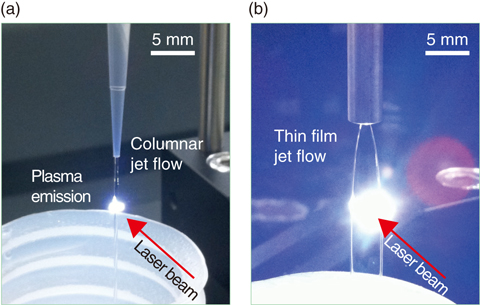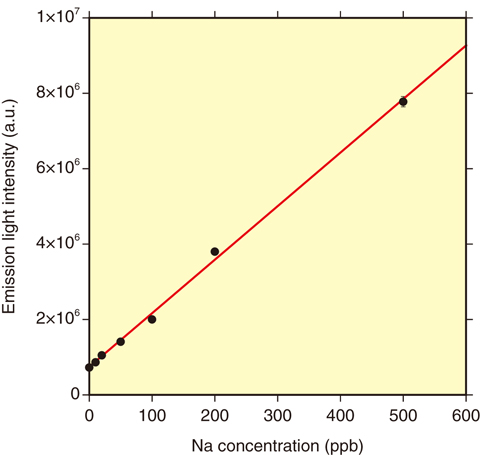
Fig.5-45 Plasma-emission light at the liquid surface produced by laser-induced breakdown

Fig.5-46 Relationship between emission-light intensity and the concentration of Na atoms in aqueous NaCl solution (Calibration curve)
Recent years have seen remarkable development and spread of atomic-spectrum-analysis devices. As for spectroscopic analysis, devices based on inductively-coupled-plasma (ICP) optical-emission-spectroscopy (OES) methods that offer immediate or instantaneous quantitative analysis are possible for various elements. However, the ICP-OES apparatus requires the sample to be pretreated before the analysis and is operated at an off-site area. Furthermore, at the site, an analysis operator separately collects liquid samples under severe environments.
In contrast, the laser-induced breakdown-spectroscopy (LIBS) analysis method does not require sample preparation because this method directly irradiates the sample being measured. This method can also perform remote, online, in situ, and real-time quantitative analysis of multiple elements. Despite the wide application of LIBS to elemental analysis of solid samples, it is difficult to use this method with liquid samples because splashes and ripples that form on the liquid prevent efficient detection of plasma emission in the ablation. Moreover, laser optics contaminated by splashes compromise the reliability of LIBS.
To overcome these difficulties, we performed feasibility studies on liquid LIBS using the free jet. A laminar columnar jet flow of water (Fig.5-45(a): water flow from the tap at low speed) or a jet flow of a film with 10 μm thickness (Fig.5-45(b): effusion of pressurized and flattened water at high speed). When we irradiated a pulsed laser beam on the free surface of a liquid, plasma emission occurred effectively with the thin-film jet flow, as shown in Fig.5-45(b), and we found that emission-light intensity improved significantly. The calibration curve for Na showed good linearity when this method was applied to the NaCl aqueous solution (Fig.5-46). The limit of detection estimated from the slope of the calibration curve and the relative standard deviation of background signal was 0.1 ppb. The value exceeded 0.5 ppb (i.e., the general-detection limit of the commercial ICP-OES device).
This method is applicable to alkali metal elements such as Rb and Cs, which are difficult to measure with an ICP-OES device. In the future, it is expected that this method may be useful for mass-transfer monitoring of the radioactive solution in nuclear reprocessing, and for monitoring of contaminated water during the decommissioning of the TEPCO’s Fukushima Daiichi NPS, as it operates under severe environments at high radiation doses.
The present study includes the result of the Development of laser remote analysis for next generation nuclear fuel and applied study by MOX sample project entrusted to the JAEA by the Ministry of Education, Culture, Sports, Science and Technology of Japan (MEXT). This work was partly supported by the Japan Society for the Promotion of Science (JSPS) KAKENHI Grant-in-Aid for Scientific Research (C) (No.24560068).